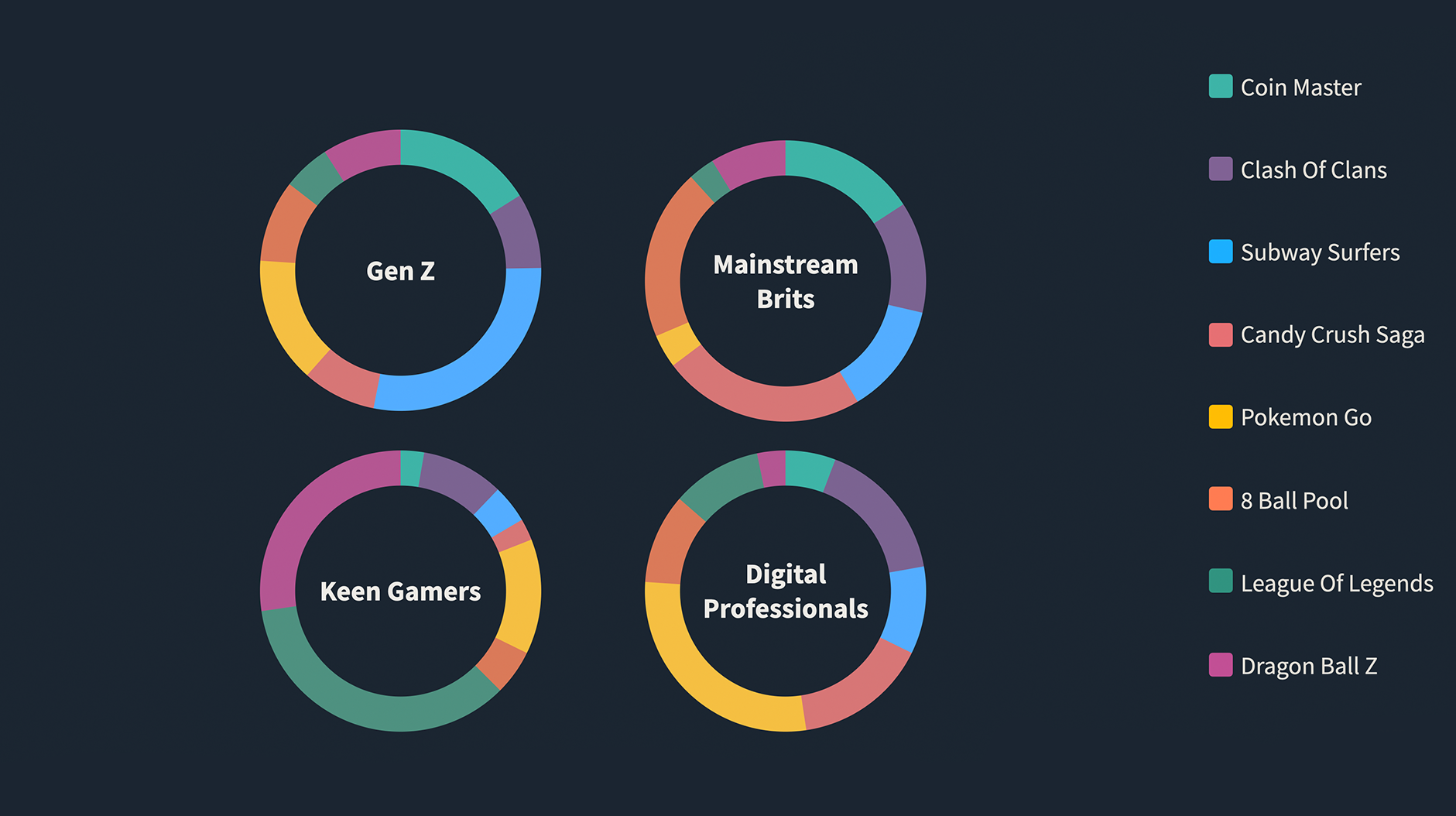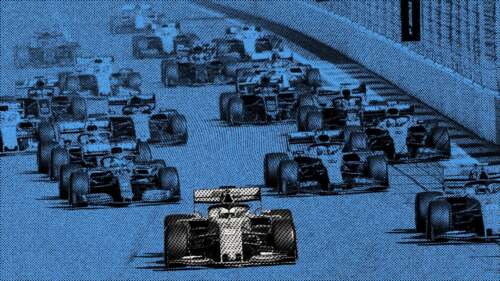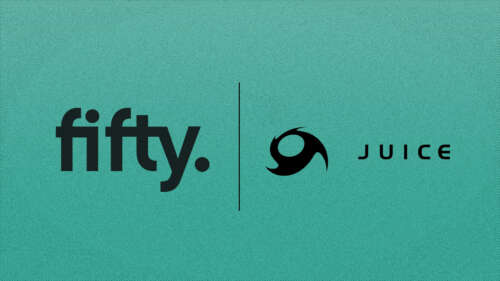With some huge releases on the horizon for 2023, we set out to find out more about current gaming audiences, specifically in mobile gaming. We based our study around some of the biggest names in the industry in the hopes of uncovering audience trends around eight key franchises. Here’s what we found:
The Tribes
Gen Z
Gen Z makes up the largest proportion of the mobile gaming audience by far. In this case the strongest presence in this behemoth of a group was an ‘alternative’ sub-tribe, centering around rock music rather than pop, as we usually see. Even so, mainstream interests are still very much present, as indicated by the presence of TikTok in their online footprint, though lingering echoes of Vine - a now defunct video sharing platform - suggest an audience on the slightly older end of Gen Z. It’s understandable and expected that this tech-literate tribe should feature so prominently, due to their being the first true smartphone generation, with a stronger tether to mobile devices than any other group.
Mainstream Brits
The Mainstream Brits come in second on tribes engaging with mobile gaming, something which indicates a widespread adoption of mobile gaming apps as well as the fact that there is significant interest across most demographics.
Keen Gamers
This audience is low hanging fruit and unsurprising, considering the nature of the study. In terms of interests, the tribe unites around popular gaming titles, brands, consoles, and streaming sites. Similarly to Gen Z, we may be looking at a slightly older group of gamers, as hinted at by the strong presence of topics like fantasy and film. This understanding might allude to the fact that younger gamers’ interests lie more firmly elsewhere - with their favourite franchises, consoles, and streamers, rather than a broader interest in gaming and, by extension, mobile gaming.
Digital Professionals
This is the fourth largest audience and a key one, as we expect gaming and mobile tech to be common interests among those in professions in the digital space. Interestingly, rather than being notably tech-savvy, these Digital Professionals are a largely millennial audience with interests in culture. This tells us they are more likely casual commuter gamers than deeply engaged gaming fans.
Who's playing what?

Gen Z is known for its rapid uptake of viral content, and its engagement with mobile gaming is no exception. Coming out on top were titles like Subway Surfers and Pokemon Go, both of which garnered huge youth media attention over the past year as TikTok Trends, with users including music or content from the games in their videos. Another frontrunner for Gen Z was Coin Master, an affinity shared with the Mainstream Brits tribe, something which could hint at Gen Z’s trendsetting, influential nature.
Pokémon Go proved a unifying force for three of our four top tribes, making up a considerable proportion for all but the Mainstream Brits, blowing other titles out of the water in the case of the Digital Professionals. This figures with the broadly Millennial age range of the tribe, as well as with its members’ career foci, helping to paint the picture of a digitally-literate group who grew up in the heyday of portable console gaming and who have a certain loyalty to franchises like Pokémon.
Separating the Keen Gamers from the rest were game franchises like League of Legends and Dragon Ball Z, both of which are big names in the gaming industry and also in the MOBA (Multiplayer Online Battle Arena)/Action RPG genre, one more commonly associated with more committed, ‘gamer’ types. Both games require more than a moment’s concentration and signal a departure from the titles commonly played by casual, commuter gamers. Contrasting boredom-busting puzzle games like Candy Crush Saga, popular with both Mainstream Brits and Digital Professionals, League of Legends and Dragon Ball Z are both competitive games, making further sense of a following by more established gamers.
Coin Master found a sizeable audience in both Gen Z and Mainstream Brits, along with Clash of Clans, which shares themes of collecting and accumulation of in-game wealth. The real-time element to both of these games, as well as the lack of traditional skills and coordination mechanics often associated with video games allow them to be easily adopted by groups across almost every demographic, and we see this reflected in the study.
Finally, the perhaps more conventional tribes of Mainstream Brits and Digital Professionals were the biggest players of 8 Ball Pool. An established title with over a decade on the app store, 8 Ball Pool is a social game, allowing players to challenge friends or strangers for live matches, bringing the aforementioned competitive element to tribes not necessarily defined by their interest in gaming.
To find out more about how your brand could reach the right audiences, drop us a line at [email protected].






































